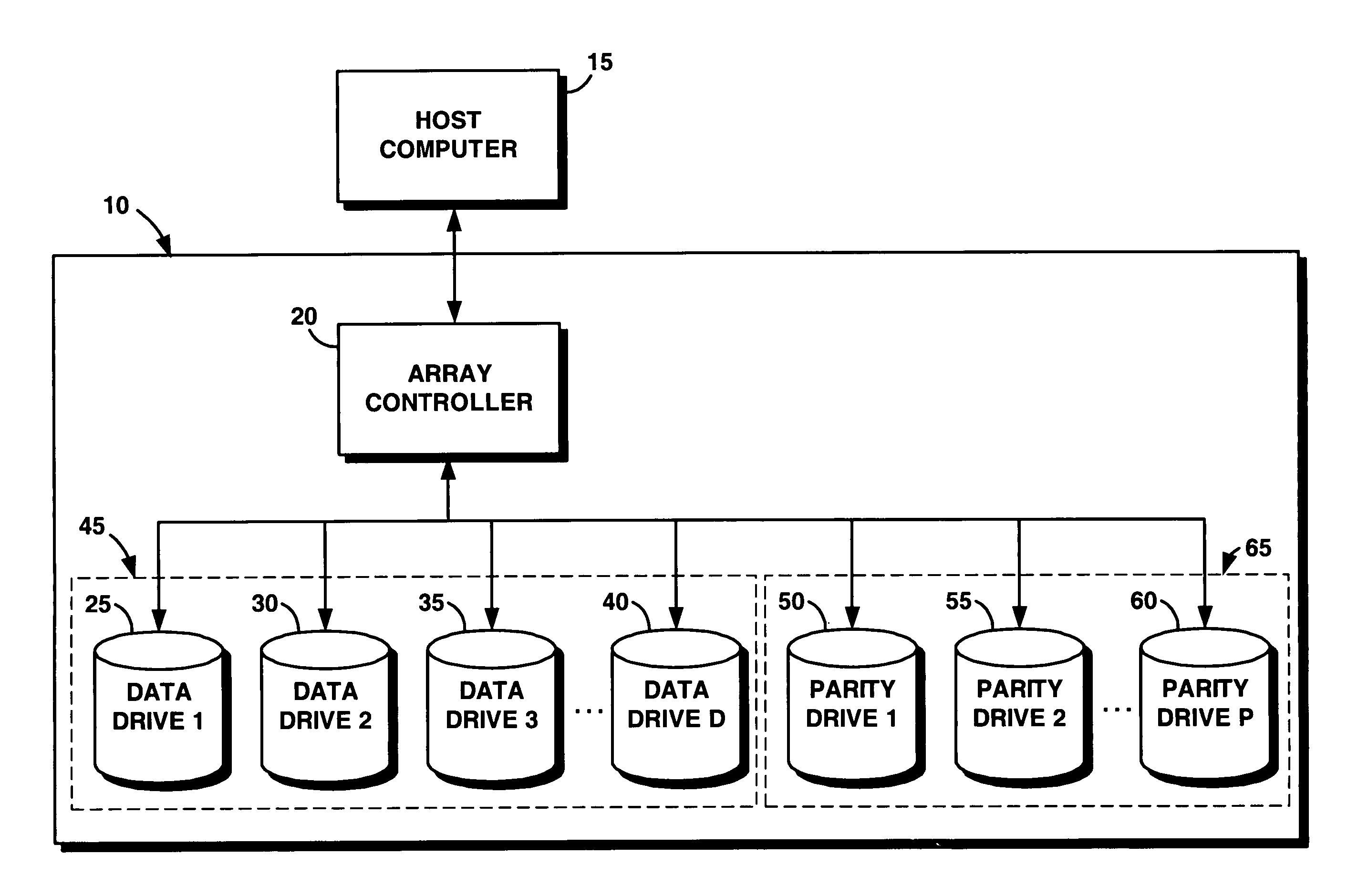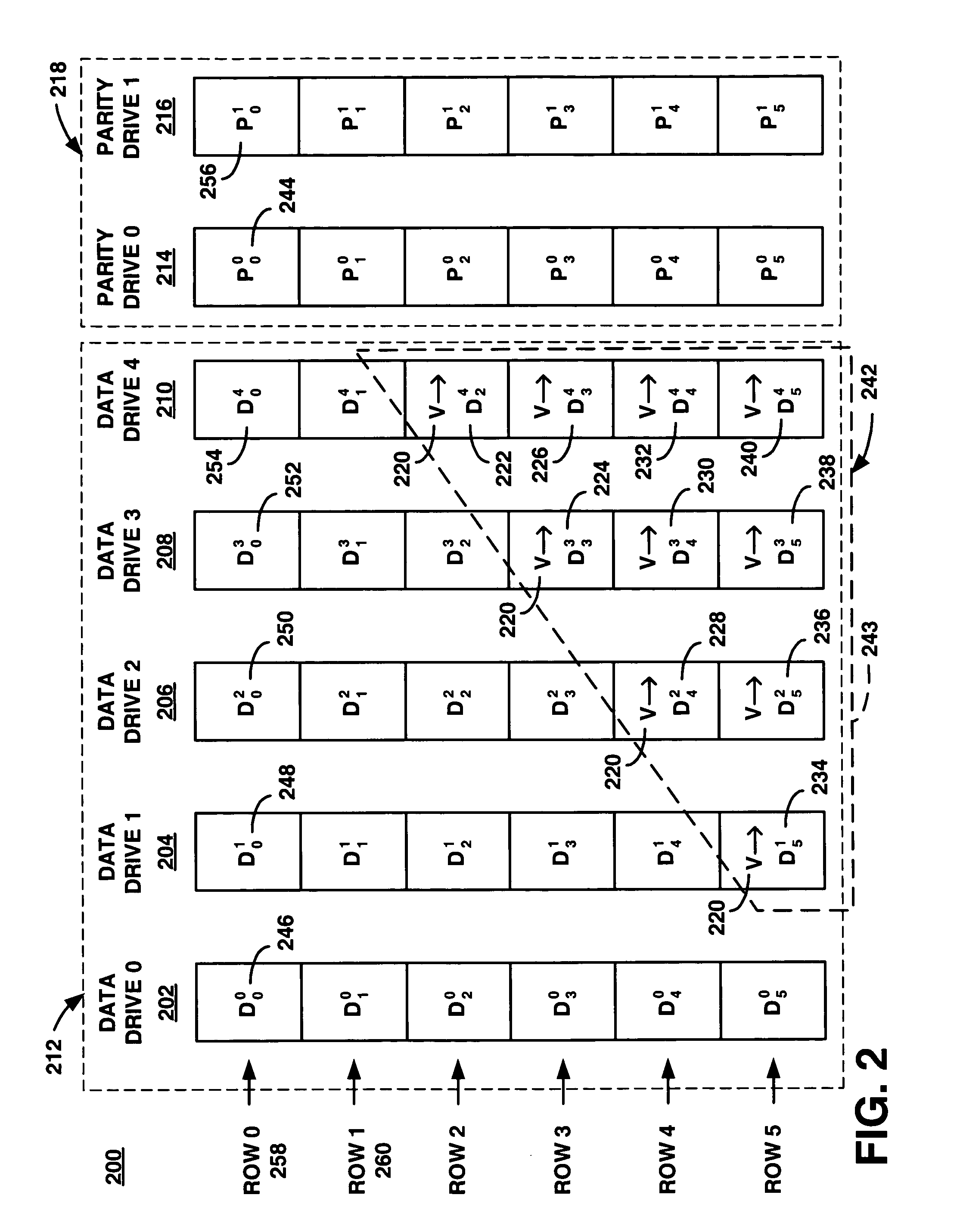System and method for enabling efficient recovery of data in a storage array
a technology of storage arrays and storage arrays, applied in the field of data storage, can solve the problems of data loss, affecting the average throughput of the storage system, and affecting the number of updates, so as to achieve optimal update complexity, optimize storage efficiency, and recover efficiently
- Summary
- Abstract
- Description
- Claims
- Application Information
AI Technical Summary
Benefits of technology
Problems solved by technology
Method used
Image
Examples
Embodiment Construction
[0029]FIG. 1 illustrates an exemplary environment in which a system and associated method (collectively referred to as “the present system”10) for enabling efficient recovery of data in a storage array can be used. A host computer 15 is connected to an array controller 20 of system 10. The host computer 15 stores data in an array of n data drives: data drive 1, 25, data drive 2, 30, data drive 3, 35, through data drive n, 40 (referenced collectively as data drives 45). Parity is stored in q parity drives: parity drive 1, 50, parity drive 2, 55, through parity drive q, 60 (referenced collectively as parity drives 65).
[0030] With further reference to FIG. 2, system 10 comprises n+q columns (disks) and r rows of elements (symbols on a disk). An element (or symbol) is a chunk of data or parity on the disk having a predetermined size. The element may represent a bit, a byte, a sector, a block, or any other unit of fixed size. The constraint on the number of rows r is r≧(q−1)·n. The jth ...
PUM
 Login to View More
Login to View More Abstract
Description
Claims
Application Information
 Login to View More
Login to View More - R&D
- Intellectual Property
- Life Sciences
- Materials
- Tech Scout
- Unparalleled Data Quality
- Higher Quality Content
- 60% Fewer Hallucinations
Browse by: Latest US Patents, China's latest patents, Technical Efficacy Thesaurus, Application Domain, Technology Topic, Popular Technical Reports.
© 2025 PatSnap. All rights reserved.Legal|Privacy policy|Modern Slavery Act Transparency Statement|Sitemap|About US| Contact US: help@patsnap.com



